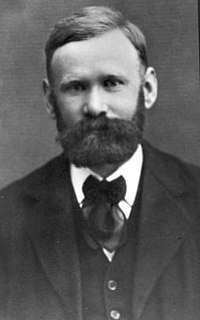A. K. Erlang
| Agner Krarup Erlang | |
|---|---|
 |
|
| Born |
1 January 1878 Lønborg, Denmark |
| Died |
3 February 1929 (aged 51) Copenhagen, Denmark |
| Occupation | Mathematician, statistician, and engineer |
Agner Krarup Erlang (1 January 1878 – 3 February 1929) was a Danish mathematician, statistician and engineer, who invented the fields of traffic engineering and queueing theory.
By the time of his relatively early death at the age of 51, Erlang had created the field of telephone networks analysis. His early work in scrutinizing the use of local, exchange and trunk telephone line usage in a small community to understand the theoretical requirements of an efficient network led to the creation of the Erlang formula, which became a foundational element of present-day telecommunication network studies.
Erlang was born at Lønborg, near Tarm, in Jutland. He was the son of a schoolmaster, and a descendant of Thomas Fincke on his mother's side. At age 14, he passed the Preliminary Examination of the University of Copenhagen with distinction, after receiving dispensation to take it because he was younger than the usual minimum age. For the next two years he taught alongside his father.
A distant relative provided free board and lodging, and Erlang prepared for and took the University of Copenhagen entrance examination in 1896, and passed with distinction. He won a scholarship to the University and majored in mathematics, and also studied astronomy, physics and chemistry. He graduated in 1901 with an MA and over the next 7 years taught at several schools. He maintained his interest in mathematics, and received an award for a paper that he submitted to the University of Copenhagen.
He was a member of the Danish Mathematicians' Association (TBMI) and through this met amateur mathematician Johan Jensen, the Chief Engineer of the Copenhagen Telephone Company (KTAS in Danish), an offshoot of the International Bell Telephone Company. Erlang worked for the CTC (KTAS) from 1908 for almost 20 years, until his death in Copenhagen after an abdominal operation.
...
Wikipedia
